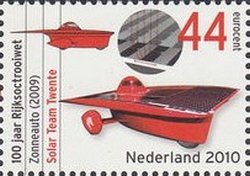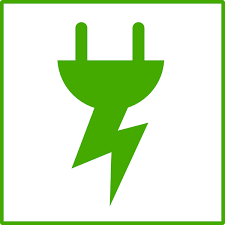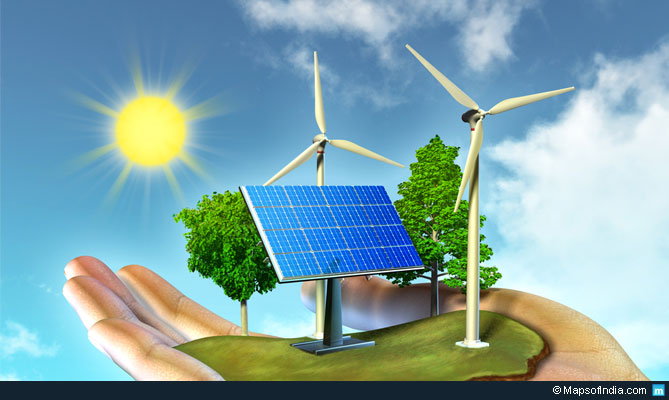Stamp: Solar automobile, Solar Team Twente 2009 (Netherlands 2010)
Solar automobile, Solar Team Twente 2009 (Netherlands 2010)
09 February (Netherlands ) within release 100 Years of patent goes into circulation Stamp Solar automobile, Solar Team Twente 2009 face value 44 Euro cent
| Stamp Solar automobile, Solar Team Twente 2009 in catalogues | |
|---|---|
| Michel: | Mi:NL 2733 |
| NVPH: | NVP:NL2704 |
Stamp is horizontal format.
Also in the issue 100 Years of patent:
- Stamp - Submarine, Cornelis Drebbel 1920 face value 44;
- Stamp - LED lighting, Philips 2007 face value 44;
- Stamp - Artificial kidney. Willem Kolff 1943 face value 44;
- Stamp - VacuVin, Bernd Schneider 1987 face value 44;
- Stamp - Milk robot, Van der Lely 1987 face value 44;
- Stamp - Bicycle chain case, Van der Woerd 1974 face value 44;
- Stamp - Handwriting recognition, TNT Post 1980 face value 44;
- Stamp - Solar automobile, Solar Team Twente 2009 face value 44;
- Stamp - Polyethylene fiber, DSM 1979 face value 44;
- Stamp - Dutch telescope, Lipperhey 1608 face value 44;
Stamp Solar automobile, Solar Team Twente 2009 it reflects the thematic directions:
A vehicle (from Latin: vehiculum) is a mobile machine that transports people or cargo. Typical vehicles include wagons, bicycles, motor vehicles (motorcycles, trucks, buses), railed vehicles (trains, trams), watercraft (ships, boats), aircraft and spacecraft. Land vehicles are classified broadly by what is used to apply steering and drive forces against the ground: wheeled, tracked, railed or skied. ISO 3833-1977 is the standard, also internationally used in legislation, for road vehicles types, terms and definitions.
A car is a wheeled, self-powered motor vehicle used for transportation and a product of the automotive industry. Most definitions of the term specify that cars are designed to run primarily on roads, to have seating for one to eight people, to typically have four wheels with tyres, and to be constructed principally for the transport of people rather than goods. The year 1886 is regarded as the birth year of the modern car. In that year, German inventor Karl Benz built the Benz Patent-Motorwagen. Cars did not become widely available until the early 20th century. One of the first cars that was accessible to the masses was the 1908 Model T, an American car manufactured by the Ford Motor Company. Cars were rapidly adopted in the United States of America, where they replaced animal-drawn carriages and carts, but took much longer to be accepted in Western Europe and other parts of the world.
In physics, energy (from Ancient Greek ἐνέργεια (enérgeia) 'activity') is the quantitative property that is transferred to a body or to a physical system, recognizable in the performance of work and in the form of heat and light. Energy is a conserved quantity—the law of conservation of energy states that energy can be converted in form, but not created or destroyed. The unit of measurement for energy in the International System of Units (SI) is the joule (J).
An invention is a unique or novel device, method, composition, idea, or process. An invention may be an improvement upon a machine, product, or process for increasing efficiency or lowering cost. It may also be an entirely new concept. If an idea is unique enough either as a stand-alone invention or as a significant improvement over the work of others, it can be patented. A patent, if granted, gives the inventor a proprietary interest in the patent over a specific period of time, which can be licensed for financial gain.
Energy conservation is the effort to reduce wasteful energy consumption by using fewer energy services. This can be done by using energy more effectively (using less energy for continuous service) or changing one's behavior to use less service (for example, by driving less). Energy conservation can be achieved through efficient energy use, which has some advantages, including a reduction in greenhouse gas emissions and a smaller carbon footprint, as well as cost, water, and energy savings.





